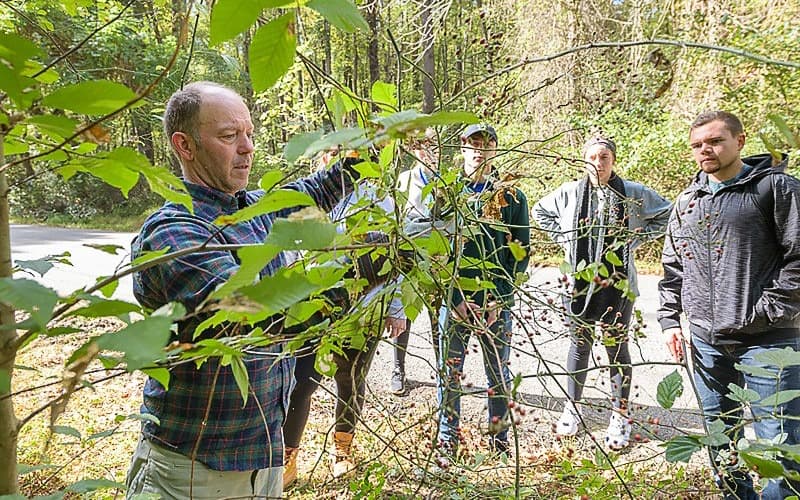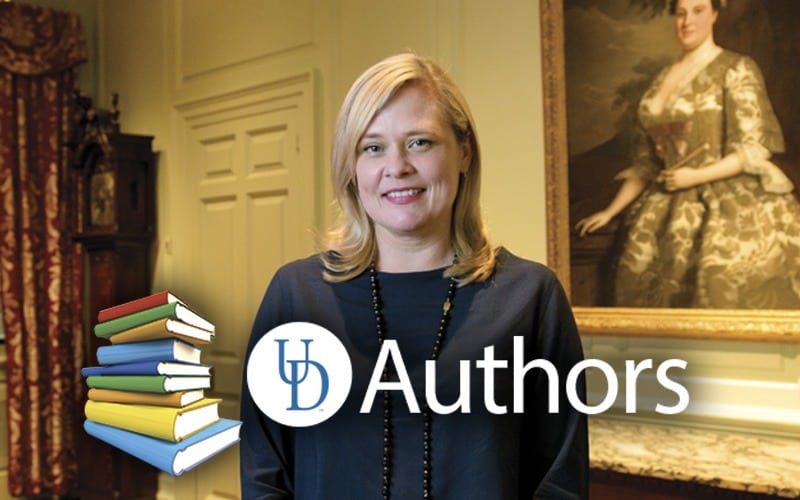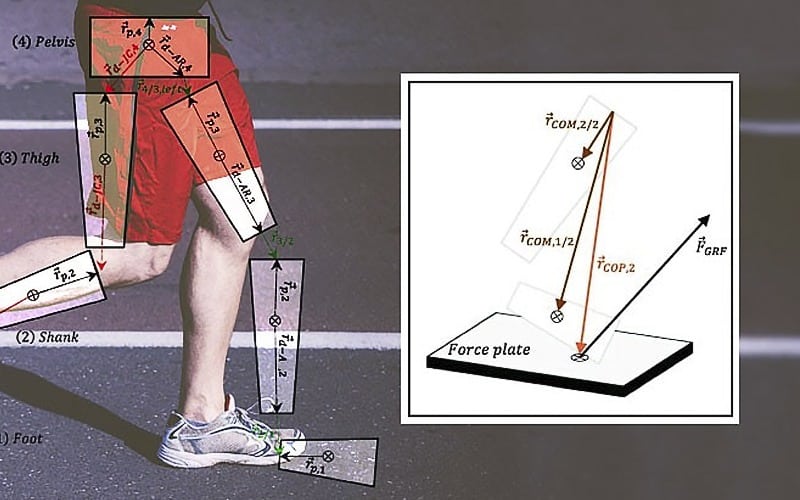 Research & Discovery
Research & Discovery
A Blog Devoted to UD Innovation, Excellence and Scholarship
Research & Discovery
A Blog Devoted to UD Innovation, Excellence and Scholarship
Beyond books
ABOVE: Prof. McKay Jenkins shows students in his environmental literature class how to identify and remove some invasive plants from the woods in White Clay Creek State Park. | Photo by Evan Krape
Environmental literature students tackle forest restoration
Students in the University of Delaware’s “Introduction to Environmental Literature” class regularly put aside their books and journals and head out of the classroom to a nearby state park.
There, they pick up such non-literary tools as long-handled loppers, clippers, shovels and work gloves and set to work attacking some of the many invasive plants that are damaging the forest.
As they cut, chop and dig to remove stubborn vines and dense shrubs, the undergraduates are experiencing firsthand some of the environmental problems they’ve been reading and writing about in class.
“After many years of having my students wander White Clay Creek State Park and journal about their experiences, I started something new this semester — training them to do forest restoration work,” said McKay Jenkins, the Cornelius A. Tilghman Professor of English and a founder of UD’s environmental humanities program.
In partnership with state park rangers, Jenkins and the students have learned to identify and remove some of the invasive species that can take over wooded areas, choking out native plants and damaging the biodiversity that makes for a healthy environment.
On a recent sunny fall day in the woods off Creek Road, just north of the UD campus, the class literally had its hands full with such invasives as autumn olive, multiflora rose, Japanese barberry and bittersweet.
Students struggled to remove vines that had wrapped so tightly around tree trunks that it was almost impossible to pry and then cut them loose. They worked in teams to chop away at invasive bushes that had become thoroughly entangled with native plants.





